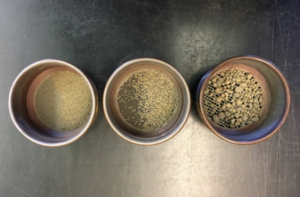
Difference between revisions of "Soil physical properties and processes"
(Created page with "= = Physical properties of soil include color, texture, structure, porosity, density, consistence, and temperature. These properties affect processes such as infiltration, ero...") |
m () |
||
| Line 1: | Line 1: | ||
= = | = = | ||
| + | {{alert|This page is in development|alert-under-construction}} | ||
| + | |||
Physical properties of soil include color, texture, structure, porosity, density, consistence, and temperature. These properties affect processes such as infiltration, erosion, and biologic activity. These properties also affect suitability of soil for different uses, such as stormwater infiltration, subgrade for roads, and strength for building. | Physical properties of soil include color, texture, structure, porosity, density, consistence, and temperature. These properties affect processes such as infiltration, erosion, and biologic activity. These properties also affect suitability of soil for different uses, such as stormwater infiltration, subgrade for roads, and strength for building. | ||
Revision as of 18:01, 16 June 2021
Contents
This page is in development
Physical properties of soil include color, texture, structure, porosity, density, consistence, and temperature. These properties affect processes such as infiltration, erosion, and biologic activity. These properties also affect suitability of soil for different uses, such as stormwater infiltration, subgrade for roads, and strength for building.
This page provides an overview of soil physical properties, processes they affect, and their affect on use, primarily for stormwater applications.
Soil texture
Soil texture (such as loam, sandy loam or clay) refers to the proportion of sand, silt and clay sized particles that make up the mineral fraction of the soil. Soil texture is determined with one of the following methods.
- Mechanical sieving, if particle size > 0.05 mm
- Sedimentation if size < 0.05 mm. Sedimentation measures the settling rate of particles in liquid medium and relates this rate to the particle mass by use of the Stokes law. Forces acting on soil particle are gravitation, buoyancy and drag forces, all of which depend on particle size. Larger particles settle first. The particle mass is determined by density and particle size. Soils must be dispersed prior to measurement. Two methods are commonly used.
- Hydrometer method (see here for description)
- Pipette method (see this video for a description)
Other methods are used to determine texture, but these employ qualitative approaches. They include the feel method, ball and ribbon methos, and ball throwing method. These are described here. These methods may be satisfactory for some applications, such as determining if a soil may be suitable for infiltration, but they must be conducted by an experienced person, such as a professional soil scientist.
The following particle size distribution, based on sieve analysis, is commonly used to define soil particles.
- gravel > 2 mm
- sand 0.05 - 2 mm
- very coarse 1 - 2 mm
- coarse 0.5 - 1 mm
- medium 0.25 - 0.5 mm
- fine 0.1 - 0.25 mm
- very fine 0.05 - 0.1 mm
- silt 0.002 - 0.05 mm
- clay < 0.002 mm (< 2 micrometer)
![image of soil texture triangle]](/images/thumb/7/79/Soil_texture_triangle.jpg/300px-Soil_texture_triangle.jpg)
Soil texture describes the distribution of these different size particles in a soil. There are twelve soils based on the distribution of sand, silt and clay. The adjacent image displays the soil texture triangle, which assigns soil type based on the distribution of sand, silt, and clay.
Texture affects many soil processes, including infiltration, drainage (water and air distribution), erosion, chemical processes, and biologic processes. These are discussed generally below.
- Sand: limited structural development, rapid infiltration, rapid drainage, low water holding capacity, leaching of minerals and organic material, reduced chemical and biological processing compared to soils with high clay content
- Silt: poor structural development, moderate infiltration rates, well drained, moderate rates of chemical and biological processing, easily eroded and compacted
- Clay: slow infiltration rates, poorly drained, high water holding capacity, high rates of chemical processing when not compacted or saturated, easily compacted
- Loam: since these are a mixture of sand, silt, and clay, these soils are generally well drained, have good water holding capacity, are chemically and biologically diverse and active
